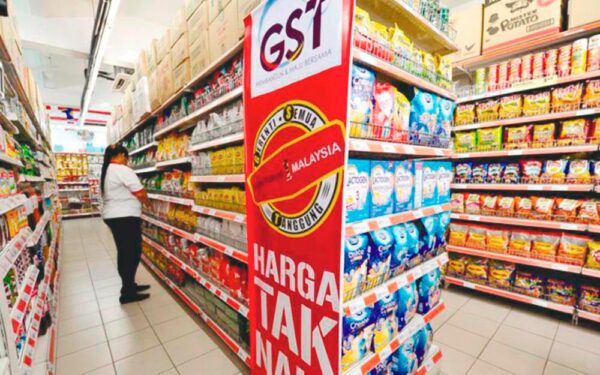THE CENTRE for Market Education (CME) has analysed the 15th General Election (GE15) manifestos proposed by two of the main political coalitions (i.e. Barisan Nasional or BN and Pakatan Harapan or PH).
The CME focused its analysis on the economic contents of the manifestos to identify strengths and weaknesses of the different platforms and try to understand if and how they would benefit Malaysia in terms of stable economic growth and international competitiveness.
A general and preliminary consideration is that both manifestos are weak on the implementation part and often stop at the desiderata (things that are desired). However, the art of policymaking consists in going beyond intentions, desires and even targets in order to evaluate those elements in the light of relevant trade-offs.
This means two things: firstly, how much is that target going to cost (not only in monetary terms but also in terms of other targets that need to be abandoned to achieve that one); and how is that target going to be implemented in a financially sustainable way?
These are fundamental questions that the winning coalition cannot avoid when moving from the announcement stage to the implementation moment.
These are the general conclusions CME draws from the analysis explained below:
- Both manifestos are silent on general tax reforms. This is as unfortunate as we are of the view that this would be the moment to push for a holistic approach which includes not only – and eventually – the reintroduction of the Goods and Services Tax (GST) but also a special scheme for microbusinesses, better enforcement strategies and a plan for targeted subsidies.
- PH’s manifesto is more widely devoted to “social issues” such as those pertaining to family, youth, elderly, freedom of speech and environment protections and contains fewer details on economic topics – in particular, it lacks a comprehensive strategy for re-building a pro-investment ecosystem.
- BN’s manifesto, while including a good hint on federalism and a clear shift from race-based policies to need-based affirmative action, introduces good points for rebuilding the pro-investment vocation of Malaysia – points that, if properly developed, may give a good competitive advantage to the country by creating good conditions for attracting foreign direct investments (FDIs).
- On education, PH’s manifesto appears to be wider while BN introduces a very important accent on the future (new) role of humanities and stresses free national early childhood education as part of a pro-social mobility strategy.
- Both manifestos introduce a strategy for food security, with BN leaning slightly more on the importance of free trade – a pillar that CME considers fundamental for a true food security strategy.
BN
The biggest hole in BN’s manifesto is the silence on tax reform.
In recent years, despite the lack of practical actions, a vibrant debate has emerged on the reintroduction of the GST and the shifting toward a system of targeted subsidies.
In light of the increasing fiscal deficit and need for a sustainable growth trajectory, the CME has talked in favour of the reintroduction of a multi-tier GST, paired with a slight reduction of income tax. Furthermore, we welcome the debate on targeted subsidies, which would build a system of support truly based on intra-national solidarity.

However, the proposed income tax cut of 2% for the middle 40 income group or M40s, as per point two of the BN manifesto (which the CME welcomes) should be accompanied by a general strategy on spending cuts and improving revenue collection. CME expected to see more in this regard.
Another weak point is point one, which introduces the Assistive Basic Income Scheme to fight poverty: as argued in our recent book Assessing and Addressing Urban Poverty in Malaysia, in the fight against poverty, CME favours a system of entrepreneurship promotion rather than income redistribution.
In line with what was proposed in the same book, CME instead welcomes the push for federalism (point three) and the recognition of the need for a new balance between science and humanities in education (point 19); if properly implemented, these initiatives can both spur entrepreneurship and develop a more effective system for fighting poverty, grounded in the principle of subsidiarity.
Solidarity instead should inspire the proposal of free national early childhood care (point 16): improving access to early education surely is a key tool for social mobility and needs to be approached with attention to the financial sustainability of the reform.
The CME also favourably evaluates some of the points on social security such as the Employment Insurance System (point 33), the reskilling initiatives (point 35) and the Employment Retention Fund (point 36). The Youth Entrepreneurship Fund (point 41) is also a positive initiative if properly designed so that the youth can benefit from interaction with successful entrepreneurs.
We have a mixed judgement on the food security strategy though: while the creation of the food valleys, characterised by formation initiatives (points 52 and 53), is good, it should be done with less government action and more involvement of the private sector. The removal of approved permits or APs (point 57) goes in the right direction and more should be done for the promotion of free trade as a fundamental pillar for food security.
The new strategy on FDIs seems to be the biggest added value of BN’s proposal.
The CME welcomes a foreign worker policy centred on human security (point 60), which should gradually move toward a higher degree of labour market liberalisation at the ASEAN level.
Similarly good is the proposal of bilateral free trade negotiations between Malaysia and regional partners (point 61) to possibly achieve a global strategy for truly free trade.
The CME further judges very positively the limits to government-linked companies’ (GLCs) investments in certain industries (point 62) and the idea of a comprehensive immigration reform which could truly aim at attracting investors (point 63), to be clearly distinguished by wealthy individuals. This section of BN’s manifesto seems to be the most promising for the relaunch of Malaysia as an international hub for investments.
Also welcomed is the shift toward a needs-based rather than race-based policy, while a spur for investments can also come from point 74 on the modernisation of the rail system.
Even so, the CME hopes that the development of megaprojects and infrastructure can be rethought following the Entrepreneur Rail Model, whereby urban planning goes hand in hand with real estate development for a different and sustainable way to finance infrastructure.
PH
Like BN’s, PH’s manifesto lacks a comprehensive proposal for tax reform.
On the cost-of-living issue, CME welcomes the fight against cartels – if, however, this means an approach against privileges that have been acquired through government protection, rather than oligopolies that have naturally developed bringing technological development and price advantages for consumers. More clarity is necessary in this regard.
A good set of proposals is advanced for food security, in particular with regard to modern farming and attracting young entrepreneurs. We hope that PH could promote this by favouring private entrepreneurship and consolidation in the industry rather than with more government regulation or government-direct economic activity.
PH developed in detail a strategy for poverty, worker protection and affordable homes. However, the proposed initiatives seem to entail a stronger role for government intervention via income redistribution, rather than the approach embraced by the CME, which aims to spur social mobility by promoting entrepreneurship.
In particular, the strategy on affordable homes seems intended to give back to the government the role of developer, when CME would like to see more support for rental schemes.
PH proposes a very good approach to education by promoting Technical and Vocational Education and Training (TVET), which is very much needed to rebalance the gap between workforce skills and employers’ expectations. However, the CME looks with scepticism at the proposed “zero reject policy”, which may nurture a mentality according to which results can be achieved without adequate effort.
While several sections are devoted to important and crucial social aspects, such as freedom of speech, the care for youth and elderly, family and environmental issues, it seems to us that too little is devoted to more purely economic strategies. For instance, in chapter 25 of the PH manifesto, a commitment to cut red tape to facilitate industries is presented but the initiatives to be deployed for this purpose are not mentioned.
On the other hand, the accent on upgrading infrastructure is welcomed, but too little is mentioned on how to nurture a more pro-investment ecosystem. – Nov 12, 2022
The Centre for Market Education (CME) is a boutique think-tank that aims to promote a more pluralistic and multidisciplinary approach to economics and spread the knowledge of sounder economics, grounded in the understanding of market forces.
The views expressed are solely of the author and do not necessarily reflect those of Focus Malaysia.









